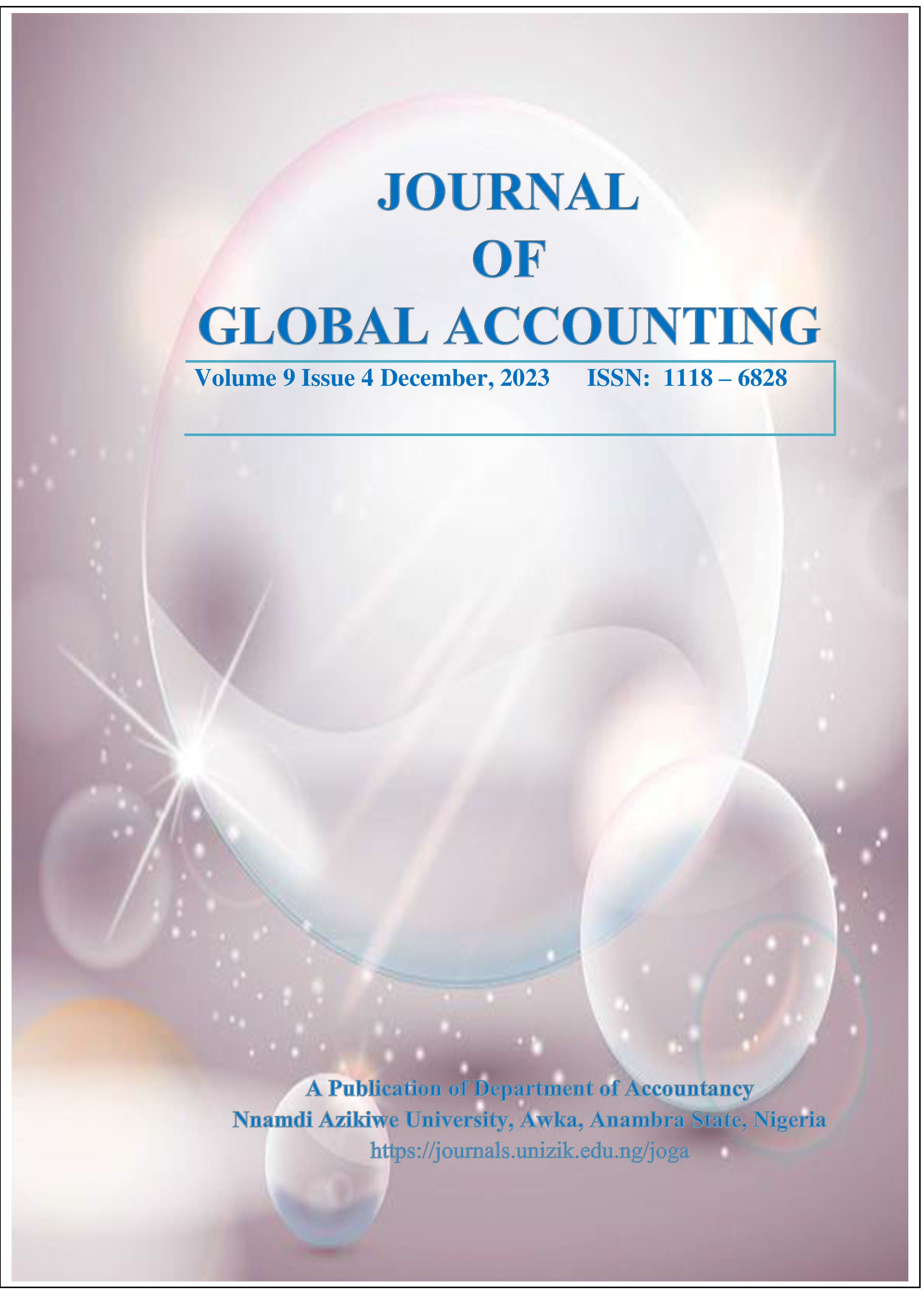EFFECT OF CASH FLOWS MANAGEMENT ON FINANCIAL PERFORMANCE OF LISTED MANUFACTURING COMPANIES IN NIGERIA
Keywords:
Abnormal Cash Flow, Abnormal Production Cost, Cash Value Added, Financial PerformanceAbstract
This study examined the effect of cash flow management on financial performance of listed manufacturing firms in Nigeria for a period of ten (10) years covering from 2013-2022. There is lack of consensus among scholars and practitioners about the relationship between cash flows management on financial performance. Panel data were used in this study, which were obtained from the annual reports and accounts of twenty (21) sampled listed manufacturing firms for the period 2013-2022. Ex-Post Facto research design was employed. Inferential statistics using Pearson correlation coefficient, Multicollinearity test, Panel Least Square (PLS) regression analysis and Hausman test were applied to test the hypotheses of the study. The results revealed that abnormal cash flow has a significant and positive effect on cash value added (β1=0.242867; p-value = 0.0000); abnormal production cost has a significant and positive effect on cash value added (β2=0.043125; p-value = 0.0000); of listed manufacturing firms in Nigeria at 5% level of significance respectively. In conclusion, the study found that manipulated cash flows and cost of sales has a significant effect on financial performance of listed manufacturing firms at 5% level of significance. The study recommended amongst others that since cash flows and cost of sales appears to be successful in persuading shareholders to assign higher value to firms with more positive accruals, firms should discretionally utilize them to improve and sustain performance.
Downloads
Published
Issue
Section
License
Copyright (c) 2023 Journal of Global Accounting

This work is licensed under a Creative Commons Attribution-NonCommercial 4.0 International License.
Articles submitted to JOGA should not have been published or are currently under review by another Journal. Kindly see the guide for the preparation of the manuscript for details. Successful submission of articles by author(s) for publication clearly implies that the work is not an infringement of any existing copyright warranty as JOGA reserves the right to be indemnified by the author(s) where any breach of such warranty is proven. For ease of dissemination and to ensure proper policing of use, papers and contributions become the legal copyright of JOGA once published unless otherwise agreed.
Permission clearance should be obtained by the author(s) where applicable for the use of any content of interest not originally created by them. This must be done before the submission of the article to JOGA. Failure to do so may lead to a lengthy delay in publication, as JOGA is unable to publish any article which has permissions pending. Thus, the rights JOGA requires are:
- Non-exclusive right to reproduce the material in the article or book chapters.
- Print and electronic rights.
- To use the material for the life of the work (for instance, there should be no time restrictions on the re-use of material).
Where tables, figures or excerpts of more than 250 words are reproduced from another source, it is expected that:
- Author(s) should obtain the necessary written permission in advance from any third-party owner of the copyright for the use in print and electronic formats of any of their text, illustrations, graphics, or other material in their manuscript. Permission must also be cleared for any minor adaptations of any work not originally created by the author(s). The author (s) should not assume that any content freely available on the web is free to use.
- Where the author adapts a significant number of any material, the author(s) must inform the copyright holder of the original work.
- Author obtains any proof of consent statements
- The author must acknowledge figure(s) and content adopted or adapted in work utilizing source(s) and further capture them in the list of references.

